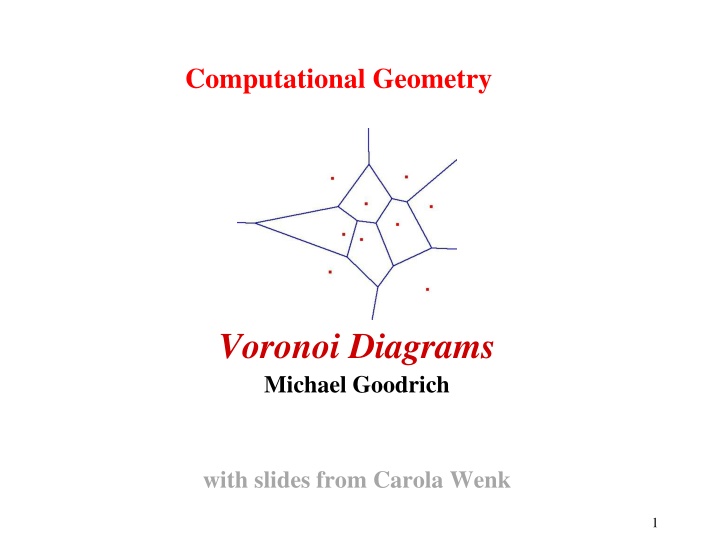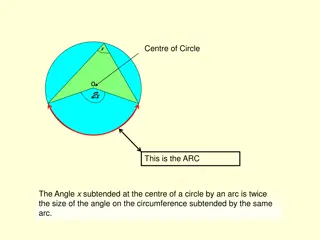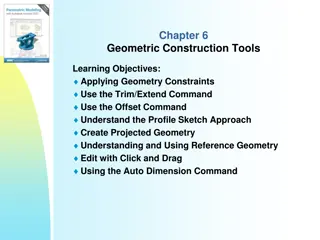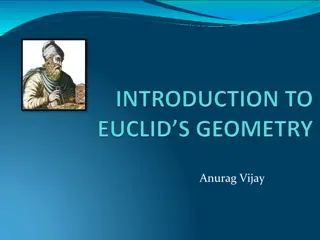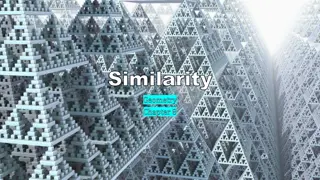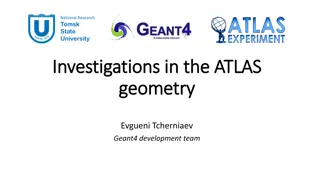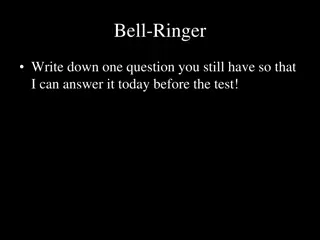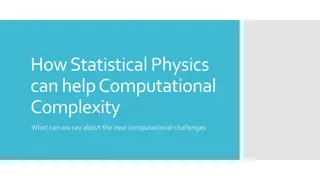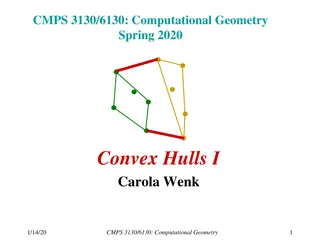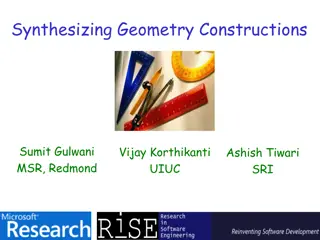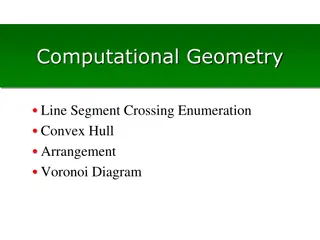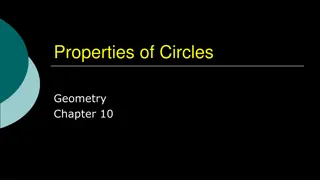Computational Geometry.
Voronoi diagrams, a key concept in computational geometry, involve partitioning a space based on points sites. They have diverse applications like nearest neighbor queries and facility location. The diagrams consist of Voronoi cells, edges, and vertices, forming a connected graph. Properties include unbounded cells on convex hulls and vertices at empty circle centers. Explore the intricacies and significance of Voronoi diagrams in this comprehensive overview.
Download Presentation

Please find below an Image/Link to download the presentation.
The content on the website is provided AS IS for your information and personal use only. It may not be sold, licensed, or shared on other websites without obtaining consent from the author.If you encounter any issues during the download, it is possible that the publisher has removed the file from their server.
You are allowed to download the files provided on this website for personal or commercial use, subject to the condition that they are used lawfully. All files are the property of their respective owners.
The content on the website is provided AS IS for your information and personal use only. It may not be sold, licensed, or shared on other websites without obtaining consent from the author.
E N D
Presentation Transcript
Computational Geometry Voronoi Diagrams Michael Goodrich with slides from Carola Wenk 1
Voronoi Diagram (Dirichlet Tesselation) Given: A set of point sites ? = ?1, ,?? ?2 Voronoi cell: Partition ?2into Voronoi cells ? ?? = ? ?2 ? ??,? < ? ??,? for all ? ?} Voronoi diagram: The planar subdivision obtained by removing all Voronoi cells from ?2. 2
Applications of Voronoi Diagrams Nearest neighbor queries: Sites are post offices, restaurants, gas stations For a given query point, locate the nearest point site in ?(log?) time point location Closest pair computation: Na ve ?(?2) algorithm; sweep line algorithm in ?(?log?) time Each site and the closest site to it share a Voronoi edge Check all Voronoi edges (in ?(?) time) Facility location: Build a new gas station (site) where it has minimal interference with other gas stations Find largest empty disk and locate new gas station at center If center is restricted to lie within ??(?) then the center has to be on a Voronoi edge 3
Bisectors Voronoi edges are portions of bisectors For two points p, q, the bisector ? ?,? is defined as ? ?,? = ? ?2 ? ?,? = ?(?,?)} r q p Voronoi vertex: s q p 4
Voronoi cell Each Voronoi cell ?(??) is convex and V ?? = ??,??, ? ? ?? ? where (??,??) is the halfspace that is defined by bisector b(??,??) and that contains ?? pj pi (??,??) A Voronoi cell has at most ? 1 sides 5
Voronoi Diagram The Voronoi diagram is a planar, embedded, connected graph with vertices, edges (possibly infinite), and faces (possibly infinite). Theorem: Let ? = ?1, ,?? ?2. Let ?? be the number of vertices in ?? ? and let ?? be the number of edges in ?? ? . Then ?? 2? 5, and ?? 3? 6 Add vertex at infinity Proof idea: An application of Euler s formula ??+ 1 ??+ ? = 2 with = because the planar graph is connected, and 2??= ? ?deg ? 3 ??+ 1 . 6
Properties 1. A Voronoi cell ? ??is unbounded iff ?? is on the convex hull of the sites. ? is a Voronoi vertex iff it is the center of an empty circle (disk) that passes through three sites. 2. Site with bounded Voronoi cell Site with unbounded Voronoi cell Smaller empty disk centered on Voronoi edge Larger empty disk centered on Voronoi vertex 7
Fortunes sweep to construct the VD Problem: We cannot maintain the intersection of the VD with sweepline l since the VD aboveldepends on the sites below l. Sweep line status: Beach line Identify points q l+ for which we know their closest site. If there is a site pi l+ s.t. dist(q,pi) dist(q, l) then the site closest to q lies above l. Define the beach line as the boundary of the set of points q l+ that are closer to a site above lthan to l. The beach line is a sequence of parabolic arcs The breakpoints (beach line vertices) lie on edges of the VD, such that they trace out the VD as the sweep line moves. 8
Parabola Set of points (x,y) such that dist((x,y), p) = dist(l) for a fixed site p = (px,py) 9
Site Events Site event: The sweep line l reaches a new site A new arc appears on the beach line which traces out a new VD edge 10
Site Events Lemma: The only way in which a new arc can appear on the beach line is through a site event. Proof: Case 1: Assume the existing parabola bj (defined by site pj) breaks through bi bi Formula for parabola bj : Using pjy>ly and piy>ly one can show that it is impossible that bi and bj have only one intersection point. Contradiction. 11
Site Events Case 2: Assumebj appears on the break point q between bi and bk bk bi There is a circle C that passes through pi, pj, pk and is tangent to l: But for an infinitesimally small motion of l, either pi or pk penetrates the interior of C. Therefore bj cannot appear on l. 12
Circle Events Circle event: Arca shrinks to a point q, and then arc a disappears There is a circle C that passes through pi, pj, pk and touches l (from above). There is no site in the interior of C. (Otherwise this site would be closer to q than q is to l, and q would not be on the beach line.) q is a Voronoi vertex (two edges of the VD meet in q). Note: The only way an arc can disappear from the beach line is through a circle event. 13
Data Structures Store the VD under construction in a DCEL Sweep line status (sweep line): Use a balanced binary search tree T, in which the leaves correspond to the arcs on the beach line. Each leaf stores the site defining the arc (it only stores the site and not the arc) Each internal node corresponds to a break point on the beach line Event queue: Priority queue Q (ordered by y-coordinate) Store each point site as a site event. Circle event: Store the lowest point of a circle as an event point Store a point to the leaf/arc in the tree that will disappear 14
How to Detect Circle Events? Make sure that for any three consecutive arcs on the beach line the potential circle event they define is stored in the queue. Consecutive triples with breakpoints that do not converge do not yield a circle event. Note that a triple could disappear (e.g., due to the appearance of a new site) before the event takes place. This yields a false alarm. 15
Sweep Code 16
Sweep Code Degeneracies: If two points have the same y-coordinate, handle them in any order. If there are more than three sites on one circle, there are several coincident circle events that can be handled in any order. The algorithm produces several degree-3 vertices at the same location. Theorem:Fortune s sweep runs in O(n log n) time and O(n) space. 17
Handling a Site Event Runs in O(log n) time per event, and there are n events. 18
Handling a Circle Event Runs in O(log n) time per event, and there are O(n) events because each event defines a Voronoi vertex. False alarms are deleted before they are processed. 19
